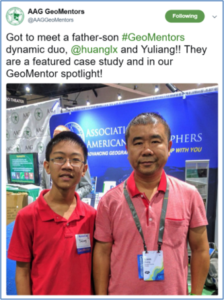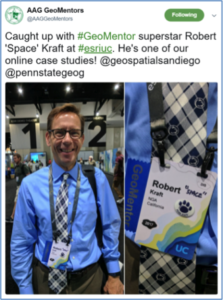How the AAG Selects Its Annual Meeting Venues
From the Meridian: a column by Doug Richardson
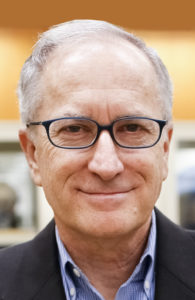
If ever you find yourself at a loss for conversation among a group of geographers, simply ask this one question: Where do you think the AAG should hold its next Annual Meeting? Everyone has an opinion on this question, and embellished memories of past meetings to recount; the only risk of raising this question is that the conversation may well go long into the night.
How the AAG Selects Annual Meeting Sites
Selecting AAG Annual Meeting sites is a lengthy and complex process. I would like to share with you the many steps and considerations that go into Annual Meeting site selection that have been in place for many years. As with most major academic associations, we contract for meeting sites about five to eight years into the future, and in blocks of three or four meetings at a time. This gives us negotiating leverage, minimizes costs, and reduces staff time by consolidating what is a very lengthy and complicated due diligence and negotiation process.
At the outset, the process involves a great deal of AAG member and Council discussion and input, as well as extensive data gathering, past history analysis, cost comparison, staff experience, research, and consultation with our professional conference managers firm, as well as geographical balancing of our meeting sites. We then develop and issue a detailed Request for Proposals (RFP) to several prospective cities, liaison with the bidders, conduct comparative analyses of all proposals, perform physical site inspections, weigh union hotel preferences, and enforce the inclusion of numerous specific contract stipulations that I have developed over the years to protect the AAG. All of these considerations go into the process of narrowing down feasible locations for our AAG Annual Meetings for each calendar year. With a shortlist of promising bids in hand, we then enter into detailed and careful negotiations of myriad contract provisions before signing an agreement with major convention centers and/or large hotels at a proposed site. If we cannot negotiate the costs and legal terms we require and which are favorable to the AAG at an initially preferred site, we are willing to cancel negotiations and start the above process all over again with an alternate potential city.
Finally, once we have completed lengthy negotiations and entered into major contracts for convention centers and/or large hotels at a particular year’s site, we then also must develop specifications and competitively bid out dozens of ancillary contracts for meeting services such as audio-visual services; internet availability; food and beverage obligations; overflow hotels; exhibitor booth agreements and exhibit setup services; special events needs related to workshops, field trips, and supplemental meeting room space; design, construction and setup of meeting registration structures and signage; mobile app and the printed program book; and many other agreements.
Why not small cities?
I frequently am asked why the AAG doesn’t meet in smaller cities such as Ann Arbor or Portland. The fact is that most cities are far too small to host our Annual Meetings. They lack the required number or concentration of hotel rooms and meeting rooms or sufficient airline flights to accommodate our 9,000 attendees. We do have a suite of mid-sized and lower-cost cities that we have used from time to time (most recently Tampa), but ironically these smaller city meetings are among our very lowest-attended meetings despite being our lowest cost venues. So it is not clear that lower venue costs correlate with greater access or attendance (or desirability). Costs of transportation are of course primarily a function of where one lives in relation to the meeting site, rather than the meeting site itself. This is why we try to rotate our meetings among different regions the country, so that each region is involved, and also of course so that geographers can experience many different places.
What about international AAG Meetings?
The AAG has on a few occasions held an Annual Meeting in Canada (Toronto and Montreal). I would love to hold additional AAG meetings in other international locations, from Mexico City to Vancouver to elsewhere. So why not?
One obstacle is that since 9/11, the U.S. borders with Canada and Mexico have become more difficult and uncertain to cross. At the same time, growing numbers of AAG members from other countries now teach or study on visas in the U.S. Many members have expressed concern that if they were to leave the U.S. to attend an Annual Meeting, they may not be able to return easily (or in some cases at all) to the United States. The AAG Council has considered the issue of international Annual Meetings on several occasions during the past decade, and each time the consensus has been it would not be fair to hold the AAG Annual Meeting in a location where a substantial number of our faculty and graduate student members would be unable to attend. It is of course always possible that domestic and international circumstances may change, or that the AAG Council’s position on this issue could change, but for now the consideration of fairness to these many members residing in the U.S. on visas remains the policy.
Controlling Costs at our Annual Meetings
Our conference manager consultants tell us every year that the AAG meetings are the best bargain of any of the dozens of meetings they help organize. We hold a full five day meeting, with elaborate and expensive A/V requirements for 80+ concurrent and fully equipped session rooms, as well A/V systems for large plenary and reception rooms, etc. Our meeting fees are very low and are well below those of nearly all other comparable geography meetings. In addition, our meeting fees have not been increased in many years, despite rising costs in almost every category of expense. The AAG also sponsors many programs which subsidize the costs of attending, including a very progressive registration fee structure for students, un- and underemployed members, and retired geographers, as well as mechanisms to subsidize travel and offset costs for students attending the meeting. Learn more about AAG Annual Meeting cost comparisons at our report, AAG Annual Meeting Fees: An Analysis.
Summary
We can always do more, but by all comparative measures, we are doing a very good job of keeping our meeting reasonably priced while providing an incomparable experience. This was illustrated by the responses to the recent McKinley Membership Survey, and also by the remarkable growth in the number of geographers and attendees from other disciplines deciding to attend our Annual Meeting every year. The reality is that thousands of geographers from around the world now choose to attend our meetings, despite the fact that they have dozens of other meeting options to choose from. So, we must be doing something right.
I hope this quick overview is helpful; we welcome questions and your input and would be happy to discuss any aspects of the AAG Annual Meetings in more detail with you. If you have any questions, please feel free to contact me (drichardson [at] aag [dot] org), Oscar Larson (olarson [at] aag [dot] org), or Kelsey Taylor (ktaylor [at] aag [dot] org). As always we welcome your insight and ideas for improving our annual meetings, and we look forward to seeing you in New Orleans in April of 2018!
—Doug Richardson
DOI: 10.14433/2017.0014
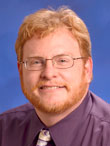


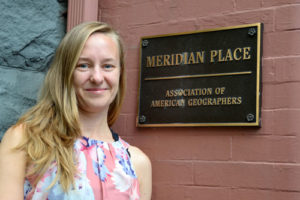
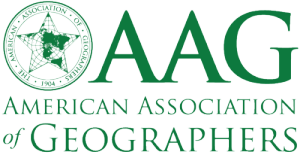 The American Association of Geographers is deeply saddened and disturbed by the recent deadly and violent events in Charlottesville, Virginia.
The American Association of Geographers is deeply saddened and disturbed by the recent deadly and violent events in Charlottesville, Virginia.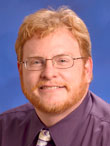 If you have not yet examined the AAG Long Range Plan, 2015-2025, then I encourage you to do so. It provides a useful update on the Association’s progress since its 2002 strategic plan and offers 20 specific recommendations important for the future of AAG and the discipline of geography. One of those recommendations calls on us to “promote outreach and engagement,” which includes encouraging and training AAG members to write and speak for general audiences to maximize the contributions of geography to public debates, policy initiatives, and the broader civic society.
If you have not yet examined the AAG Long Range Plan, 2015-2025, then I encourage you to do so. It provides a useful update on the Association’s progress since its 2002 strategic plan and offers 20 specific recommendations important for the future of AAG and the discipline of geography. One of those recommendations calls on us to “promote outreach and engagement,” which includes encouraging and training AAG members to write and speak for general audiences to maximize the contributions of geography to public debates, policy initiatives, and the broader civic society. If you have a penchant for landscape, be warned: you will be tempted to spend more time outside of the hotels than in the paper sessions of the upcoming AAG conference in New Orleans. Many aspects of the New Orleans landscape might seem generically American, especially within the compact Central Business District upriver from Canal Street, where the conference hotels are located. But venture downriver, across Canal Street into the French Quarter, and you will enter an urban landscape that remains more attuned to the Mediterranean and Caribbean than the North Atlantic. Those interested in the Hispanic and Latino aspects of this compelling landscape might consider the following sampling of spots to visit, mainly oriented toward the city’s historic status as a Spanish colonial capital and U.S. neo-colonial entrepôt for Latin America.
If you have a penchant for landscape, be warned: you will be tempted to spend more time outside of the hotels than in the paper sessions of the upcoming AAG conference in New Orleans. Many aspects of the New Orleans landscape might seem generically American, especially within the compact Central Business District upriver from Canal Street, where the conference hotels are located. But venture downriver, across Canal Street into the French Quarter, and you will enter an urban landscape that remains more attuned to the Mediterranean and Caribbean than the North Atlantic. Those interested in the Hispanic and Latino aspects of this compelling landscape might consider the following sampling of spots to visit, mainly oriented toward the city’s historic status as a Spanish colonial capital and U.S. neo-colonial entrepôt for Latin America.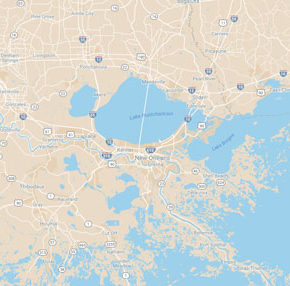 Over the next nine months, AAG’s “Focus on New Orleans and the Gulf Coast,” will feature a series of articles on New Orleans by Richard Campanella. Campanella teaches in Tulane’s School of Architecture. His geography training includes a M.S. degree from LSU where he specialized in mapping sciences. Campanella, New Orleans’ unofficial “geographer laureate,” is the author of 10 books and nearly 200 articles on New Orleans. He has received numerous awards for his highly creative integration of mapping and spatial analyses with architecture, social science and the humanities. Most recently, he received France’s highest academic honor – Chevalier dans L’Ordre des Palmes — for his geographical explications of New Orleans, past and present.
Over the next nine months, AAG’s “Focus on New Orleans and the Gulf Coast,” will feature a series of articles on New Orleans by Richard Campanella. Campanella teaches in Tulane’s School of Architecture. His geography training includes a M.S. degree from LSU where he specialized in mapping sciences. Campanella, New Orleans’ unofficial “geographer laureate,” is the author of 10 books and nearly 200 articles on New Orleans. He has received numerous awards for his highly creative integration of mapping and spatial analyses with architecture, social science and the humanities. Most recently, he received France’s highest academic honor – Chevalier dans L’Ordre des Palmes — for his geographical explications of New Orleans, past and present.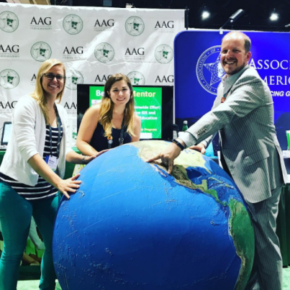 AAG Staff participated in and exhibited at the annual Esri Education GIS and User Conferences July 8th-14th in San Diego, California. The conferences are a great opportunity for the AAG to conduct outreach to the GIS community, engaging with current AAG members, signing up new AAG members, advertising the Annual Meeting for both attendees and potential exhibitors, and communicating our program efforts in the areas of geography and GIS education.
AAG Staff participated in and exhibited at the annual Esri Education GIS and User Conferences July 8th-14th in San Diego, California. The conferences are a great opportunity for the AAG to conduct outreach to the GIS community, engaging with current AAG members, signing up new AAG members, advertising the Annual Meeting for both attendees and potential exhibitors, and communicating our program efforts in the areas of geography and GIS education.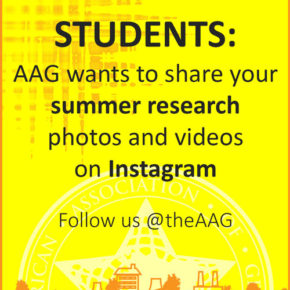 AAG just recently launched an Instagram account. Help us to raise awareness of geography and increase the visibility of your research! How can you help? You can start by submitting photos and/or videos of your summer research projects to feature on
AAG just recently launched an Instagram account. Help us to raise awareness of geography and increase the visibility of your research! How can you help? You can start by submitting photos and/or videos of your summer research projects to feature on 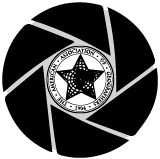 Over 40% of AAG members are students and it is this 40%+ that I want to speak to and encourage to make the most of your membership to the AAG. While I am currently an AAG employee, I started with the organization just like you, as a student member. It’s how I got started in the geography community beyond my university and it is from that personal experience as a student member (combined with additional AAG insider knowledge gained since then) that I want to talk to you.
Over 40% of AAG members are students and it is this 40%+ that I want to speak to and encourage to make the most of your membership to the AAG. While I am currently an AAG employee, I started with the organization just like you, as a student member. It’s how I got started in the geography community beyond my university and it is from that personal experience as a student member (combined with additional AAG insider knowledge gained since then) that I want to talk to you.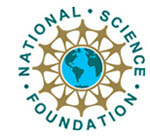 Since 2011 the U.S. National Science Foundation (NSF) has required that all submitted proposals include a Data Management Plan (DMP). A DMP is a plan for the management and sharing of any data and other kinds of products resulting from the activities in a proposal. Why did NSF start to require DMPs? NSF is a U.S. federal agency supported by taxpayer dollars. As such, data and other products generated by NSF-supported research need to be made available in a format for others to use. Investigators need to be sure that their project meets the expectation that data gathered using public funding will be preserved in ways to facilitate long-term public accessibility and use. Making data publicly available in this way will also permit future meta-analysis, which adds value to the original data collection.
Since 2011 the U.S. National Science Foundation (NSF) has required that all submitted proposals include a Data Management Plan (DMP). A DMP is a plan for the management and sharing of any data and other kinds of products resulting from the activities in a proposal. Why did NSF start to require DMPs? NSF is a U.S. federal agency supported by taxpayer dollars. As such, data and other products generated by NSF-supported research need to be made available in a format for others to use. Investigators need to be sure that their project meets the expectation that data gathered using public funding will be preserved in ways to facilitate long-term public accessibility and use. Making data publicly available in this way will also permit future meta-analysis, which adds value to the original data collection.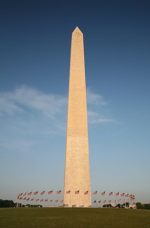
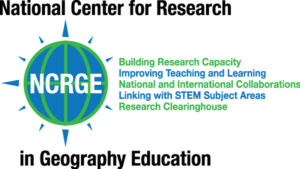 The National Center for Research in Geography Education (NCRGE), a research consortium headquartered at the American Association of Geographers (AAG) and Texas State University, has approved awards for three new projects under its Transformative Research grant program. This investment by NCRGE continues a long-term and broad-based effort to develop a research coordination network supporting implementation of the Road Map for 21st Century Geography Education project’s landmark report on geography education research.
The National Center for Research in Geography Education (NCRGE), a research consortium headquartered at the American Association of Geographers (AAG) and Texas State University, has approved awards for three new projects under its Transformative Research grant program. This investment by NCRGE continues a long-term and broad-based effort to develop a research coordination network supporting implementation of the Road Map for 21st Century Geography Education project’s landmark report on geography education research.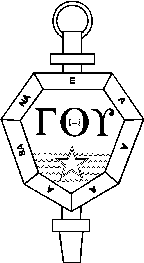 The Visiting Geographical Scientist program (VGSP) is accepting applications for the 2017-18 academic year. VGSP sponsors Gamma Theta Upsilon visits by prominent geographers to small departments or institutions that do not have the resources to bring in well-known speakers. The purpose of this program is to stimulate interest in geography, targeted for students, faculty members, and administrative officers. Participating institutions select and make arrangements with the visiting geographer.
The Visiting Geographical Scientist program (VGSP) is accepting applications for the 2017-18 academic year. VGSP sponsors Gamma Theta Upsilon visits by prominent geographers to small departments or institutions that do not have the resources to bring in well-known speakers. The purpose of this program is to stimulate interest in geography, targeted for students, faculty members, and administrative officers. Participating institutions select and make arrangements with the visiting geographer.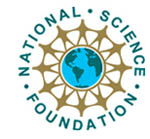 Grad students in geography and related spatial sciences will have an opportunity to compete in NSF’s Graduate Research Fellowship Program (GRFP). GRFP recognizes and supports outstanding graduate students pursuing research-based masters and doctoral degrees in science or engineering at accredited US institutions. NSF seeks GRFP panels composed of researchers and educators from a wide range of institutions, geographic locations, and disciplinary and interdisciplinary backgrounds.
Grad students in geography and related spatial sciences will have an opportunity to compete in NSF’s Graduate Research Fellowship Program (GRFP). GRFP recognizes and supports outstanding graduate students pursuing research-based masters and doctoral degrees in science or engineering at accredited US institutions. NSF seeks GRFP panels composed of researchers and educators from a wide range of institutions, geographic locations, and disciplinary and interdisciplinary backgrounds.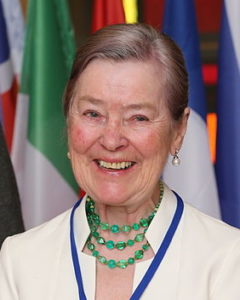
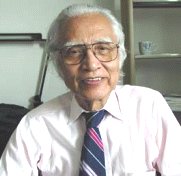 Masatoshi Yoshino, a distinguished Japanese physical geographer who served the IGU as the founder and the Chair of the Commission on Climatology (1988-1992) and as a Vice President (1992-1996), died on July 4, 2017, at the age of 89. He was a devoted scholar and kept writing and publishing quality articles till the very last moment of his life. Many people might remember him not only as a respectable scientist but also as an able and reliable organizer or leader, as can be seen in the success of the International Geographical Congress in Tokyo in 1980 which he conducted as the Secretary General.
Masatoshi Yoshino, a distinguished Japanese physical geographer who served the IGU as the founder and the Chair of the Commission on Climatology (1988-1992) and as a Vice President (1992-1996), died on July 4, 2017, at the age of 89. He was a devoted scholar and kept writing and publishing quality articles till the very last moment of his life. Many people might remember him not only as a respectable scientist but also as an able and reliable organizer or leader, as can be seen in the success of the International Geographical Congress in Tokyo in 1980 which he conducted as the Secretary General.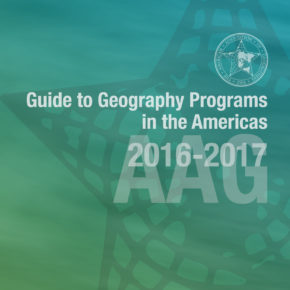 The AAG’s Guide to Geography Programs in the Americas, or The Guide, includes detailed information on undergraduate and graduate geography programs in the United States, Canada, and Latin America, including degree requirements, curricula, faculty qualifications, program specialties, financial assistance, and degrees completed, and more. The 2016-2017 edition of The Guide is now available for free online. The AAG has also published an interactive, companion map where users can search for programs by location, degree type, field of interest, and regional focus.
The AAG’s Guide to Geography Programs in the Americas, or The Guide, includes detailed information on undergraduate and graduate geography programs in the United States, Canada, and Latin America, including degree requirements, curricula, faculty qualifications, program specialties, financial assistance, and degrees completed, and more. The 2016-2017 edition of The Guide is now available for free online. The AAG has also published an interactive, companion map where users can search for programs by location, degree type, field of interest, and regional focus. Every month the AAG compiles a list of newly-published books in geography and related fields. Some are selected for review in the AAG Review of Books. Anyone interested in reviewing these or other titles should contact the Editor-in-Chief, Kent Mathewson.
Every month the AAG compiles a list of newly-published books in geography and related fields. Some are selected for review in the AAG Review of Books. Anyone interested in reviewing these or other titles should contact the Editor-in-Chief, Kent Mathewson.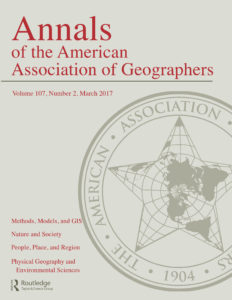
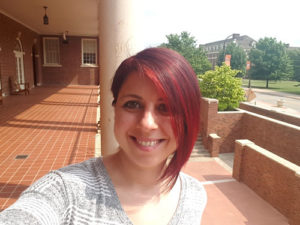 The AAG welcomes Emily Fekete in the new position of Communications, Education, and Media specialist. Prior to the AAG, she was employed as a clinical assistant professor and undergraduate coordinator for the geography department at Oklahoma State University. While at the university, she taught courses in cultural geography, economic geography, and geographies of new media as well as served as the undergraduate advisor and coordinator of the undergraduate geography, geospatial information science, and global studies programs.
The AAG welcomes Emily Fekete in the new position of Communications, Education, and Media specialist. Prior to the AAG, she was employed as a clinical assistant professor and undergraduate coordinator for the geography department at Oklahoma State University. While at the university, she taught courses in cultural geography, economic geography, and geographies of new media as well as served as the undergraduate advisor and coordinator of the undergraduate geography, geospatial information science, and global studies programs.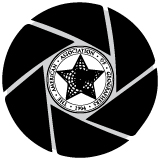 Over 40% of AAG members are students and it is this 40%+ that I want to speak to and encourage to make the most of your membership to the AAG. While I am currently an AAG employee, I started with the organization just like you, as a student member. It’s how I got started in the geography community beyond my university and it is from that personal experience as a student member (combined with additional AAG insider knowledge gained since then) that I want to talk to you.
Over 40% of AAG members are students and it is this 40%+ that I want to speak to and encourage to make the most of your membership to the AAG. While I am currently an AAG employee, I started with the organization just like you, as a student member. It’s how I got started in the geography community beyond my university and it is from that personal experience as a student member (combined with additional AAG insider knowledge gained since then) that I want to talk to you. field, the people whose research you read and cite, whose lab facilities or activities you drool over. But don’t just observe their presentations, go up and talk to them! The meeting is a great atmosphere and opportunity to talk as colleagues. We all love geography and we love talking about it. Make a connection. Attach a real person, a voice to the research you are interested in. You never know when you’ll get a new idea, make a new connection, or encounter a new opportunity by simply making the effort to talk to people.
field, the people whose research you read and cite, whose lab facilities or activities you drool over. But don’t just observe their presentations, go up and talk to them! The meeting is a great atmosphere and opportunity to talk as colleagues. We all love geography and we love talking about it. Make a connection. Attach a real person, a voice to the research you are interested in. You never know when you’ll get a new idea, make a new connection, or encounter a new opportunity by simply making the effort to talk to people. Get your presentation mojo. There are a wide range of talks and presentations at any meeting. I promise you that at some point during the Annual Meeting you’re going to walk away from a session and think, “I can totally do that…”, or even “I think I can do BETTER than that”. So do it! Realize that you have the potential to present, you have the knowledge to present, and then do so the next chance you get! The Annual Meeting can make you feel like a little fish in a big pond, so if that is overwhelming, consider attending and presenting at
Get your presentation mojo. There are a wide range of talks and presentations at any meeting. I promise you that at some point during the Annual Meeting you’re going to walk away from a session and think, “I can totally do that…”, or even “I think I can do BETTER than that”. So do it! Realize that you have the potential to present, you have the knowledge to present, and then do so the next chance you get! The Annual Meeting can make you feel like a little fish in a big pond, so if that is overwhelming, consider attending and presenting at 

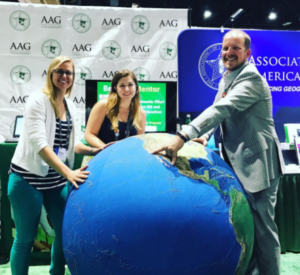 AAG Staff participated in and exhibited at the annual Esri Education GIS and User Conferences July 8th-14th in San Diego, California. The conferences are a great opportunity for the AAG to conduct outreach to the GIS community, engaging with current AAG members, signing up new AAG members, advertising the Annual Meeting for both attendees and potential exhibitors, and communicating our program efforts in the areas of geography and GIS education.
AAG Staff participated in and exhibited at the annual Esri Education GIS and User Conferences July 8th-14th in San Diego, California. The conferences are a great opportunity for the AAG to conduct outreach to the GIS community, engaging with current AAG members, signing up new AAG members, advertising the Annual Meeting for both attendees and potential exhibitors, and communicating our program efforts in the areas of geography and GIS education.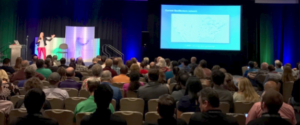 The GeoMentors program was mentioned in the well-attended opening User Conference plenaries, including promotion of the program by Esri’s Chief Scientist Dawn Wright (6:33 mark of
The GeoMentors program was mentioned in the well-attended opening User Conference plenaries, including promotion of the program by Esri’s Chief Scientist Dawn Wright (6:33 mark of 